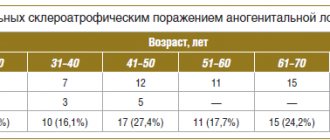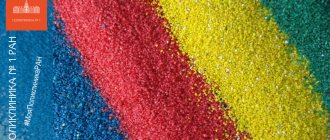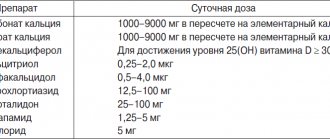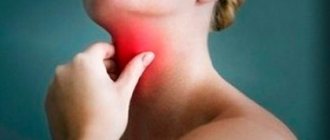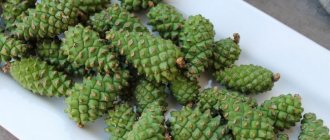Treatment
In the acute period, the goal of treatment is detoxification . According to indications, hormonal drugs may be prescribed, but only in case of severe cases of certain helminthiases or to prevent allergic complications.
Today, medicine has highly effective anthelmintic drugs to combat most helminthiases. A necessary condition for successfully getting rid of some helminths is the simultaneous treatment of all family members (team) and strict adherence to a hygiene regime to prevent re-infection. Treatment is not limited to the prescription of anthelmintic drugs: therapeutic measures must be taken in combination and be aimed not only at the destruction of helminths, but also at eliminating the consequences of their vital activity. At SM-Clinic, therapy includes taking antihistamines to prevent allergies. If necessary, after taking an anthelmintic drug, patients are prescribed a course of enterosorbents and probiotic drugs.
Therapist-gastroenterologist, hepatologist, Ph.D. Ilchishina T.A.
CESTODOSES
Teniarinhoz
Taeniarhynchosis is a helminthiasis caused by the bovine tapeworm ( Taeniarhynchus saginatus
). It is characterized primarily by dysfunction of the gastrointestinal tract and spontaneous passage of helminth segments from the intestine.
Choice of antimicrobials
Drugs of choice:
praziquantel 25 mg/kg once.
Alternative drugs:
niclosamide - 2.0 g in the evening before bed and 1.0 g in the morning on an empty stomach. After 5 hours, take a laxative.
TENIOSIS, CYSTICERCOSIS
Taeniasis is a helminthiasis caused by parasitism of the pork tapeworm ( Taenia solium
). Cysticercosis is an invasion in humans that occurs when the larval stage of the same helminth is parasitized; the most severe form is neurocysticercosis.
Choice of antimicrobials
Intestinal taeniasis
Drugs of choice:
niclosamide 2.0 g at night. It is recommended to drink 1.0-2.0 g of sodium bicarbonate 15 minutes before taking it. The drug is highly effective, causing the death of the scolex and immature joints.
Alternative drugs:
praziquantel 25 mg/kg once.
Cerebral cysticercosis
Drugs of choice:
praziquantel - 50 mg/kg/day in 3 doses for 14 days or more; albendazole - 15 mg/kg/day in 3 doses for 10 days. It is recommended to carry out 3 cycles of treatment with an interval of 2-3 weeks. Along with anthelmintic drugs, patients with cysticercosis are prescribed glucocorticoids.
DYPHYLLOBOTRIOSIS
Diphyllobothriasis is a helminthiasis caused by tapeworms of the genus Diphyllobothrium
.
The main pathogen is the broad tapeworm ( Diphyllobotrium latum
). It is characterized by a chronic course with a predominant dysfunction of the gastrointestinal tract and the possibility of developing megaloblastic anemia.
Choice of antimicrobials
Drugs of choice:
prazivantel 25 mg/kg once. For severe anemia, vitamin B12 is prescribed before deworming.
HYMENOLEPIDISIS
Hymenolepiasis is a helminthiasis of humans and small rodents caused by tapeworms of the genus Hymenolepis
. It is characterized by a predominant disruption of the digestive organs.
Choice of antimicrobials
Drugs of choice:
praziquantel, two doses of 2 mg/kg with an interval of 10 days.
ECHINOCOCCOSIS
Echinococcosis is a chronic helminthiasis caused by the parasitism of larvae of tapeworms of the family Taeniidae
—
Echinococcus granulosus
and
E. multilocularis
.
The main treatment method for patients with echinococcosis remains surgical.
Conservative therapy for patients with echinococcosis is indicated for multiple lesions of the liver, lungs and other organs, in which surgical intervention is associated with a high risk to life and is technically impossible. It is also used as an anti-relapse treatment for rupture of echinococcal cysts (in history or as a result of damage during surgical interventions).
Choice of antimicrobials
Chemotherapy regimens for echinococcosis have not been fully developed. For these purposes, albendazole is currently used predominantly, and mebendazole is used less frequently.
Drugs of choice:
albendazole 10-20 mg/kg/day. The duration of the continuous cycle is from 3 weeks to several months; number of cycles - from 1 to 20 or more. The intervals between cycles are 21-28 days or treatment is carried out continuously for several years. The effectiveness of treatment with albendazole for hydatid echinococcosis of the liver and lungs ranges from 41% to 72%; relapses occur in an average of 25% of patients. The effectiveness of conservative therapy for alveolar echinococcosis is lower, and the relapse rate is higher. Conservative and surgical treatment of echinococcosis complement each other and require a strict individual approach.
Alternative drugs:
mebendazole In the first 3 days, use 0.5 g every 12 hours, in the next 3 days, 0.5 g every 8 hours, then 25-30 mg/kg/day in 3-4 doses for 15-24 months (from taking into account portability).
During therapy, complications may arise associated with a decrease in vital activity and death of the parasite: suppuration of cysts, spontaneous ruptures, the appearance of cavities of decay of alvolar echinococcus with subsequent abscess formation. A high incidence of complications is observed in the treatment of pulmonary echinococcosis, especially with cysts larger than 6 cm in diameter. In these cases, the development of lung abscesses and pleural empyema is observed. These complications quite often require surgical treatment.
Table. Preparations for the treatment of human helminthiasis
| 0.2-0.4 g once 0.4 g every 24 hours for 3 days 0.4-0.8 g every 12-24 hours for 3-5 days 0.4 g every 24 hours for 1- 3 days 10 mg/kg/day in 3 divided doses for 7-10 days 10 mg/kg/day in 3 divided doses for 10-20 days 0.2 g once, see text | Not applicable up to 2 years | ||
| Levamisole | Ascariasis Ankylostomiasis | 0.15 g once 0.15 g twice with an interval of 7-10 days | 2.5 mg/kg once 2.5 mg/kg twice with an interval of 7-10 days |
| Mebendazole | Ascariasis Ankylostomiasis Trichocephalosis Trichinosis Enterobiasis Echinococcosis | 0.1 g every 24 hours for 3 days 0.1 g every 12 hours for 3 days 0.1 g every 12 hours for 3-6 days 0.3-0.6 g/day in 3 divided doses for 7-14 days 0.1 g once see text | Single doses: up to 3 years - 0.025 g, 3-6 years - 0.05 g, over 7 years - 0.1 g. Prescription regimens as for adults |
| Pyrantela pamoate | Ascariasis Ankylostomiasis Enterobiasis | 10 mg/kg once 10 mg/kg every 24 hours for 3 days 10 mg/kg twice with an interval of 1 week | Single doses: 6 months-2 years - 62.5 mg; 2-6 years - 0.125 g; 6-12 years - 0.25 g; 12-15 years - 0.375 g Prescription regimens as for adults |
| Praziquantel | Opisthorchiasis Clonorchiasis Paragonimiasis Schistosomiasis Hymenolepiasis Diphyllobothriasis Teniarynchosis Teniosis | 75 mg/kg/day in 3 divided doses for 1 day 40-75 mg/kg/day in 2-3 divided doses, 1 day 20-25 mg/kg twice with an interval of 10 days 20-25 mg/kg once | Not applicable up to 4 years |
| Niclosamide | Hymenolepidosis Diphyllobothriasis Taeniarinhoz Teniosis | 2.0-3.0 g/day (see text) | up to 2 years - 0.5 g/day 3-5 years - 1.0 g/day 5-12 years - 1.5 g/day |
| Ivermectin | Strongyloidiasis Onchocerciasis | 0.2 mg/kg once 0.15 mg/kg once | Not applicable up to 5 years |
| Diethylcarbamazine | Filariasis | 6 mg/kg/day in 3 divided doses for 10-28 days (see text) | Not applicable under 6 years of age |


